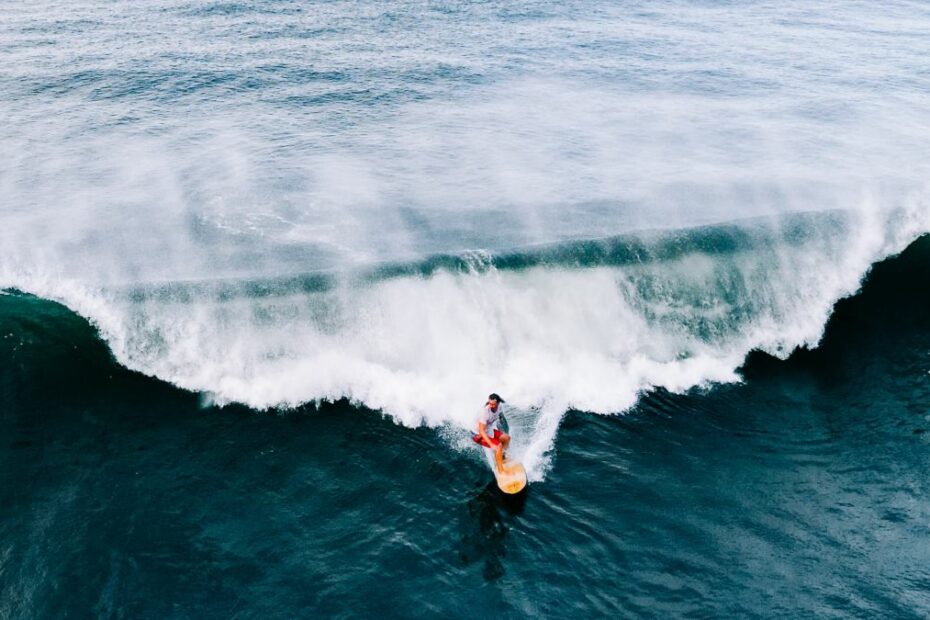As the ISA World Surfing Games return to El Salvador today, is this definitive proof that Central America is home to the best surfing in the world?
If there’s any activity that’s driven tourism to Central America over the past 50 years or so, it’s surfing. Sure, you’ll find rainforests, national parks, tropical wildlife, ancient ruins, and vibrant cultures. All that’s a given. But surfing plays a major part in why people travel to – or move to – the region.
My favorite book about Central America is In Search of Captain Zero by Allan Weisbecker. Published in 2001, it recounts a surfer’s road trip from Mexico to Costa Rica in the mid-1990s, as Weisbecker looks for his long lost friend. During his journey, Weisbecker surfs in Mexico, Guatemala, El Salvador, and Nicaragua before winding up in Puerto Viejo, Costa Rica.
There’s a chapter I love where Weisbecker finds himself in La Libertad, El Salvador, hanging out with an old friend who was living there. He talks about how, even during the 80s civil war, surfers still came to El Salvador. I found that fascinating. (It’s also worth pointing out that La Libertad in the mid-90s was also super dangerous, a far cry from nowadays.)
The same thing can be said for Nicaragua. Even during their civil war, the surfers came. And during the unrest of 2018, they came. Surfers are an indomitable bunch, and will travel anywhere there’s a wave. And in their wake, they bring prosperity and development.
Where is the best surfing in Central America (Our favorite Central America surf towns to visit in 2022) #surfing #surftravel #centralamericahttps://t.co/nIxzIJS1QO
— Central America Living (@VidaAmerica) January 12, 2022
From pioneers to prosperity
The beach communities of El Paredón in Guatemala, El Tunco/El Sunzal in El Salvador, and San Juan del Sur in Nicaragua all rely on surf dollars. Ditto Tamarindo, Jacó, Pavones, Dominical, Santa Teresa, Nosara, Puerto Viejo, and many more places in Costa Rica. Same in various Panama beach towns. So many places around Central America that were once isolated fishing hamlets sin luz are now thriving tourist centers thanks to those pioneering surfers who came chasing waves decades ago.
Surfing is now so important that Costa Rica has its own National Surfing Day, held on the third Sunday of October. National Surfing Day isn’t just a day. It’s an official day of public interest which allows the government to promote the sport and put money into it. El Salvador, through its Surf City program, has put surfing front and center of government tourism policy. President Nayib Bukele of El Salvador has been instrumental in this. In short, surfing in Central America has come a way from dudes in camper vans hopping beach to beach back in the day.
View this post on Instagram
The International Surfing Association (ISA) appears to recognize all this
Today, ISA competition returns to the region, as Central America (El Salvador) hosts the World Surfing Games again. Since 1996, when the competition emerged in its present format (it was the ISF World Surfing Championships from 1964 to 1972 and the ISA World Surfing Championships from 1978 to 1994), Central America has hosted the sport’s most important competition seven times. For such a small part of the world, that’s incredible.
In fact, no other part of the world has hosted the World Surfing Games more than Central America. Take a look at the below list of venues since 1996:
- 1996 – Huntington Beach, United States
- 1998 – Lisbon, Portugal
- 2000 – Maracaípe, Brazil
- 2002 – Durban, South Africa
- 2004 – Salinas, Ecuador
- 2006 – Huntington Beach, United States
- 2008 – Costa de Caparica, Portugal
- 2009 – Playa Hermosa, Costa Rica
- 2010 – Punta Hermosa, Peru
- 2011 – Pedasí, Panama
- 2013 – Santa Catalina, Panama
- 2014 – Punta Rocas, Peru
- 2015 – Popoyo, Nicaragua
- 2016 – Jacó, Costa Rica
- 2017 – Biarritz, France
- 2018 – Tahara, Japan
- 2019 – Miyazaki, Japan
- 2021 – Surf City, El Salvador
- 2022 – Huntington Beach, United States
- 2023 – Surf City, El Salvador
🏄♂️🤙🏼🇸🇻🤯 https://t.co/a8KcAU38Qp
— Nayib Bukele (@nayibbukele) May 24, 2023
Including the 2023 games starting today, Central America has hosted seven out of 20 events
That’s 35% of all ISA World Surfing Games. Put into perspective, North America has hosted three games (United States in 1996, 2006, 2022), South America four games (Brazil 2000, Ecuador 2004, Peru 2010 and 2014), Europe three games (Portugal 1998 and 2008/France 2017), Asia two games (Japan 2018 and 2019), and Africa once (South Africa 2002).
That breaks down as follows:
- Central America: 35%
- South America: 20%
- North America: 15%
- Europe: 15%
- Asia: 10%
- Africa: 5%
Which is, as mentioned, incredible. Given the size of Central America and the fact that other parts of the world have never hosted these games in the present format (Australia, Fiji, and Indonesia come to mind straight away), it’s truly remarkable.
And we haven’t even discussed other ISA competitions. In recent years, Central American countries have also hosted the Longboard Championships, Masters, Junior Championships, and so on. Indeed, El Salvador just finished hosting the 2023 World Longboard Championship. It’s clear Central America stands up front and center of the global surf scene in the 21st century.
View this post on Instagram
Central America: The best surfing in the world?
Central America has earned its status as home to the best surfing in the world. The number of ISA competitions hosted here solidifies the region’s prominence.
The combination of consistent swells, warm waters, and natural beauty creates an irresistible allure for surfers. Whether it’s challenging reef breaks, powerful beach breaks, long points, or smaller waves for learning, the region offers a diverse range of surf spots for surfers of all abilities.
It’s great to see the ISA back in the region again. Great for the economy and great for Central America’s (and El Salvador’s) image. We wish the best of luck to all the competing surfers gathered in El Salvador right now, and for a successful tournament for everyone.
James Dyde is the editor of centralamerica.com. He lives in Escazu, Costa Rica.




